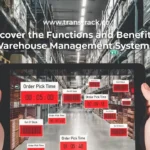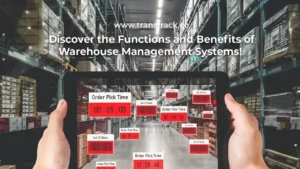How CVT Works, How to Maintain, Advantages, and Differences with Matic
Posted on November 7, 2023 by Nur Wachda Mihmidati

CVT stands for Continuously Variable Transmission or in Indonesian known as continuously variable transmission. It is a type of automatic transmission that can seamlessly change gear ratios without the need to engage fixed gears as in conventional automatic transmissions.
In a CVT transmission, there are no conventionally shifted gears. Instead, it uses a belt or chain connected between two pulleys to provide a variable ratio between the rotating speed of the engine and the drive wheels. This allows the vehicle to keep the engine at an optimal rev level for better fuel efficiency and responsiveness.
The advantages of a CVT include better fuel efficiency as the engine can run at the optimal rev level, and a smoother driving experience as there is no sudden shifting between gears. Nonetheless, some may find that CVTs lack the same driving “feel” as conventional transmissions with felt gears. CVTs are often used in compact cars, sedans, and other vehicles to improve fuel efficiency. Check out the full article with TransTRACK!
How Car CVT Works in General
A Continuously Variable Transmission (CVT) works in a different way compared to a conventional automatic transmission that uses fixed gears. Here is how a CVT works in general:
How a CVT Works: Variable Pulley
- The CVT works using two pulleys, one at the front and one at the rear. Each pulley has two parts that can move against each other: one part that rotates and one part that is stationary.
How a CVT Works: Belt or Chain
- Between the two pulleys is a belt or chain. This belt can move back and forth along the pulley, changing the effective diameter of the pulley.
How a CVT Works: Ratio Change
- When the car accelerates or decelerates, the CVT system automatically adjusts the pulley diameters to change the transmission ratio. If the car needs more torque (for example, when accelerating), the pulley at the front can be narrowed (reducing the diameter), while the pulley at the rear can be widened (increasing the diameter). Conversely, when the car is running at a constant speed or slowing down, the ratio can be changed to improve fuel efficiency.
How the CVT Works: Electronic Control
- The CVT system is controlled by an electronic control unit (ECU) that monitors parameters such as car speed, engine speed, and acceleration. This ECU ensures that the transmission always operates at the highest level of efficiency.
In this way, the CVT provides a smoother driving experience and can maintain the engine at the optimal rev level for better fuel efficiency. It is important to note that the implementation of a CVT may vary between car manufacturers and vehicle models. Some CVTs may even mimic the feeling of a traditional gearshift to provide a more familiar driving experience for the driver.
CVT Advantages
The Continuously Variable Transmission (CVT) has several advantages that make it attractive to both car manufacturers and consumers. Here are some of the key advantages of CVTs:
Fuel Efficiency
One of the main advantages of a CVT is its fuel efficiency. Since CVTs can dynamically adjust the transmission ratio to keep the engine operating at the optimal rev level, vehicles with CVTs can often achieve better fuel consumption compared to conventional automatic transmissions.
Smooth Driving Experience
The CVT provides a smoother driving experience as there is no gearshift feel. While some may miss the feeling of shifting gears, many drivers find comfort and serenity driving with the CVT, especially in urban traffic conditions.
Quick Response
A CVT can provide a faster response to changes in speed and acceleration because there are no gearshifts that take time to perform. This can make the driver feel more responsive and can improve road safety.
Wide Range of Transmission Ratios
The CVT allows for variable changes in the transmission ratio, allowing the car to operate at the most efficient ratio for a given speed and road condition. This provides greater flexibility compared to conventional automatic transmissions that have fixed ratios.
Ease of Maintenance
Some people consider CVTs to be easier in terms of maintenance due to the lack of gear shifting which can reduce wear and tear on transmission components.
While CVTs have such advantages, it is important to remember that driving experience is subjective and individual preferences may vary. Some drivers may prefer the feel of a traditional gearshift, while others favor the convenience and efficiency of a CVT.
How to maintain a car CVT
Taking care of a car’s continuously variable transmission (CVT) is important to ensure its performance remains optimal and its lifespan is long. Here are some tips for maintaining your car’s CVT:
Perform Routine Maintenance
Follow the maintenance schedule suggested by the car manufacturer. This may include CVT oil changes and general checks of the transmission system.
Check CVT Oil Level
Make sure the CVT oil level is always at the right level. Clean and healthy oil can help keep the transmission temperature stable and lubricate components properly.
Change Oil on Schedule
Change the CVT oil according to the manufacturer’s recommendations. Fresh oil helps maintain the cleanliness and performance of the transmission. Don’t forget to use the recommended oil type.
Avoid Overloading
Avoid carrying excessive loads or pulling loads that exceed the capacity specified by the manufacturer. Overloading can increase the stress on the transmission and accelerate wear.
Drive Softly
Avoid sudden acceleration and deceleration. Driving gently helps reduce stress on transmission components and can increase CVT longevity.
Watch for Signs of Trouble
If you notice any signs of trouble such as strange noises, unusual vibrations, or warning lights on the dashboard, have it checked immediately to prevent further damage.
Avoid Overheating
Avoid excessive driving in extreme heat or transporting heavy loads in heavy traffic conditions. High temperatures may affect transmission performance.
Perform Belt or Chain Replacement (if necessary)
Some CVTs use a belt or chain. If the manufacturer recommends replacement at certain intervals, be sure to adhere to those recommendations.
Importance of Proper Oil Selection
Make sure to use transmission oil recommended by the manufacturer. Proper oil selection can ensure good lubrication and optimal transmission performance.
Refer to the User Manual
Always refer to the vehicle’s user manual for specific information on CVT maintenance and manufacturer recommendations.
Maintaining your CVT regularly and paying attention to signs of trouble can help prevent more serious damage and maintain your car’s transmission performance.
Difference between CVT and Matic
The term “matic” usually refers to a conventional automatic transmission or often referred to as an automatic transmission. On the other hand, a CVT (Continuously Variable Transmission) is a different type of automatic transmission than a conventional automatic transmission. Here are some differences between CVT and conventional automatic transmission (matic):
Gear Changes
- Matic: Conventional automatic transmissions have several fixed gears that can be automatically selected by the transmission system. Generally, they use discrete gears (e.g., P, R, N, D, and other gears) that are limited.
- CVT: Has no fixed gears. The CVT can variablely change the transmission ratio to match the needs of driving, providing an experience without noticeable gear shifts.
Mechanical Construction
- Matic: Uses a selectable number of gears to change the transmission ratio. Shifting is done through various mechanisms, such as a planetary gearset.
- CVT: Uses two or more variable pulleys connected by a belt or chain. Transmission ratio changes occur by changing the diameter of the pulleys.
Response and Acceleration
- Matic: In some cases, there may be a delay or noticeable change in the transition between gears.
- CVT: Provides smoother acceleration as there is no noticeable gear shift. The CVT continuously adjusts the transmission ratio to keep the engine operating at optimal speed.
Fuel Efficiency
- Matic: Although automatic transmissions are getting more efficient, some still have slightly lower fuel efficiency compared to CVTs.
- CVT: Known for its good fuel efficiency as it keeps the engine operating at optimal revs.
Durability and Maintenance
- Matic: Generally, more common and more durable, but can also require regular maintenance such as transmission fluid changes.
- CVT: Requires specialized maintenance, such as CVT oil changes in accordance with the manufacturer’s guidelines.
Vehicle Choice
- Matic: Found in many types of vehicles, including passenger cars, trucks, and SUVs.
- CVT: More common in passenger cars, especially in models that emphasize fuel efficiency.
It is important to note that each type of transmission has its advantages and disadvantages, and driver preferences may vary. While CVTs are generally recognized for their fuel efficiency, some people may prefer the driving sensation with the gearshift feel that conventional automatic transmissions have.
In exploring the complexities of Continuously Variable Transmission (CVT) technology, now comes the latest solution to maximize the performance and lifespan of your CVT. By utilizing TransTRACK’s Vehicle Maintenance System, drivers can optimize maintenance and ensure their CVT is operating at its best.
The system not only provides information on routine maintenance, such as oil changes and inspections, but also provides real-time monitoring of CVT performance. With a deeper understanding of how the CVT operates, you can take proactive measures to prevent breakdowns and extend the life of the transmission.
Don’t let vehicle maintenance become a burden. Be a smart driver and make the best investment for your vehicle with TransTRACK Vehicle Maintenance System. Safety and comfort on the road starts with good maintenance. Happy driving!
Topic :
 Bahasa Indonesia
Bahasa Indonesia








